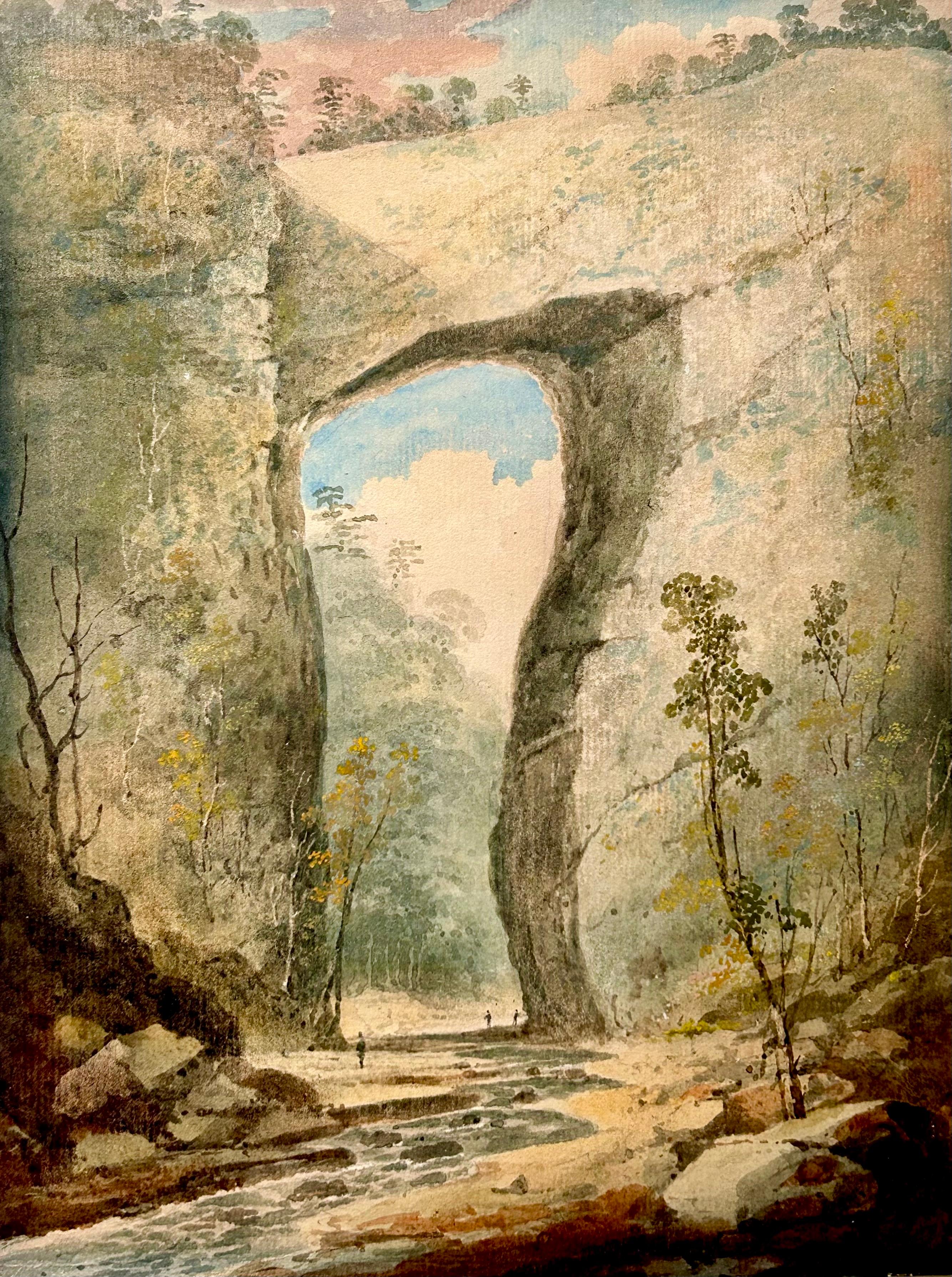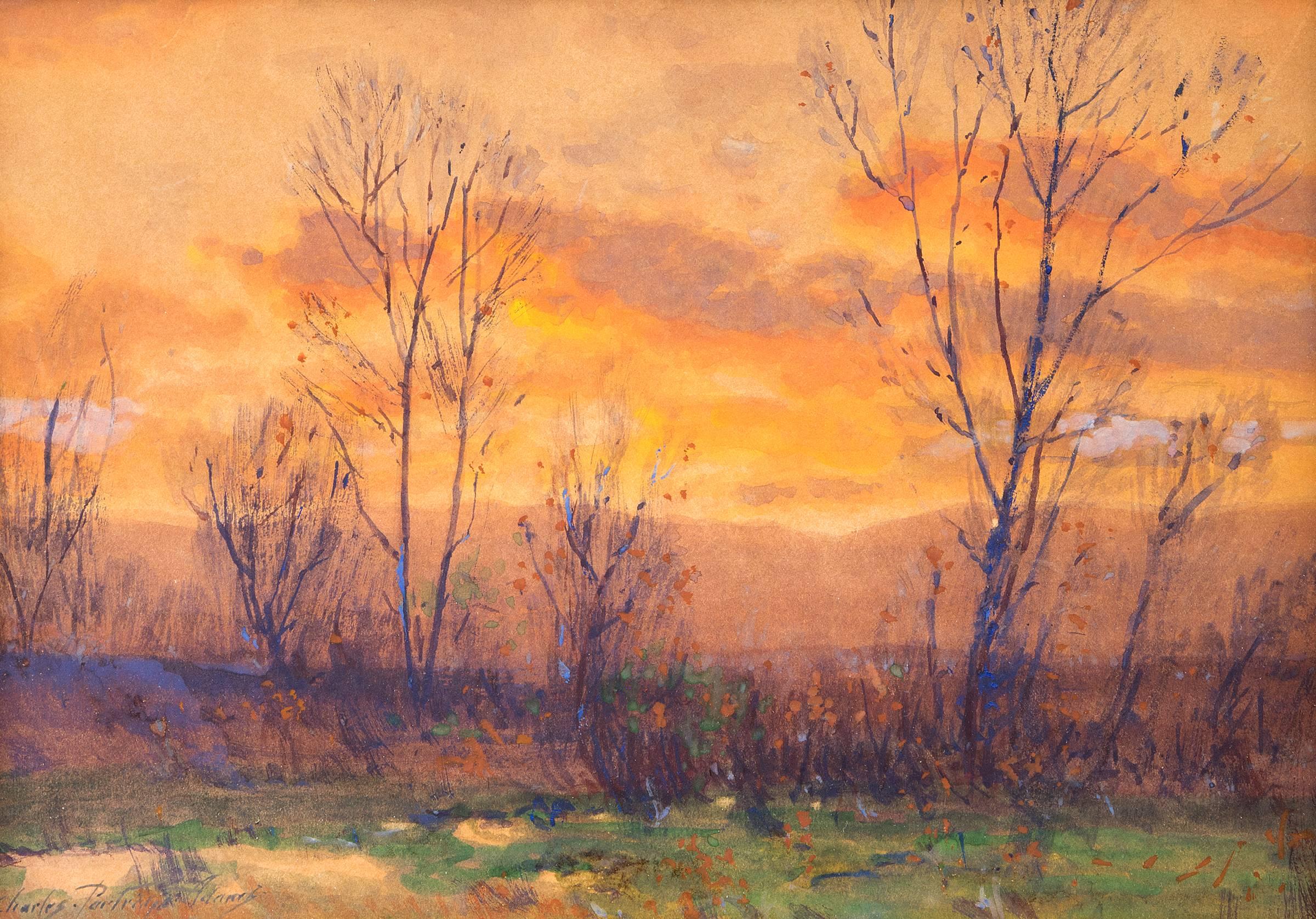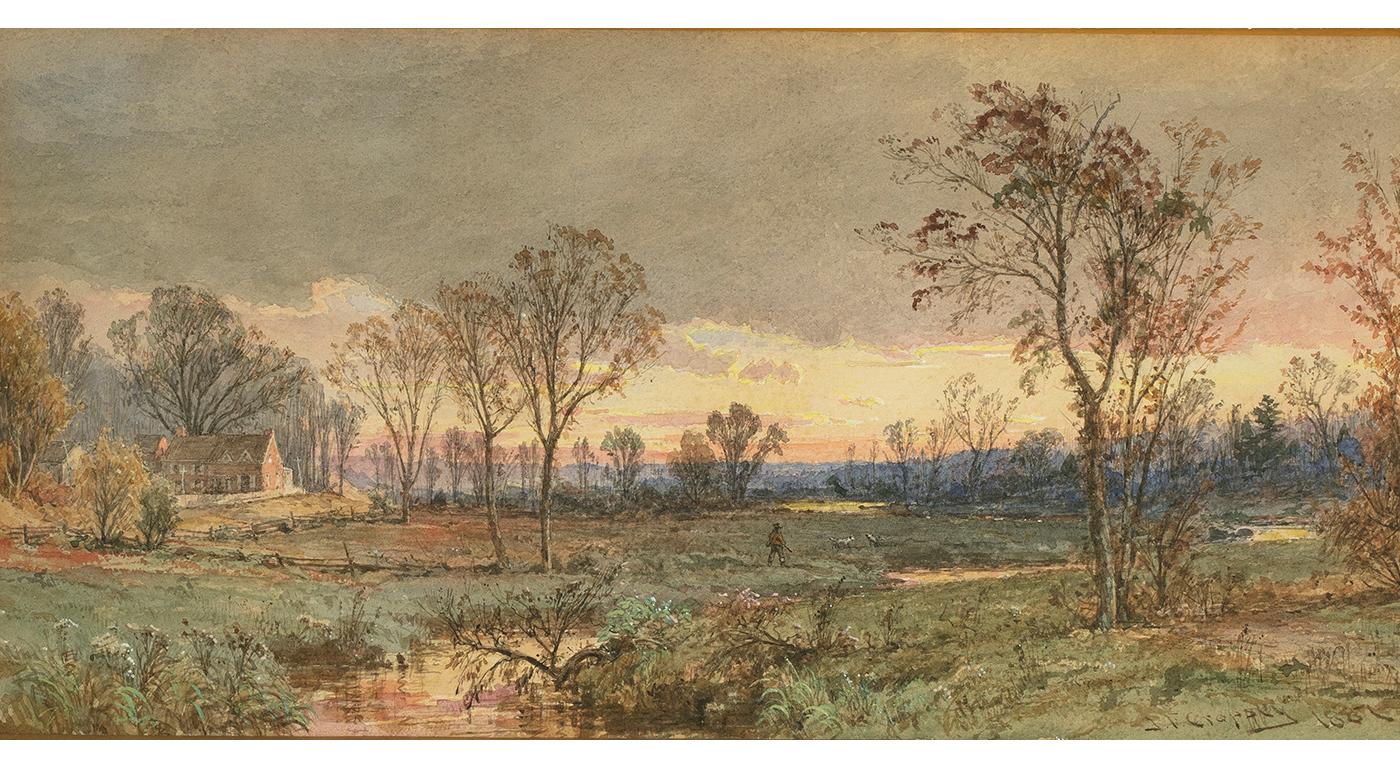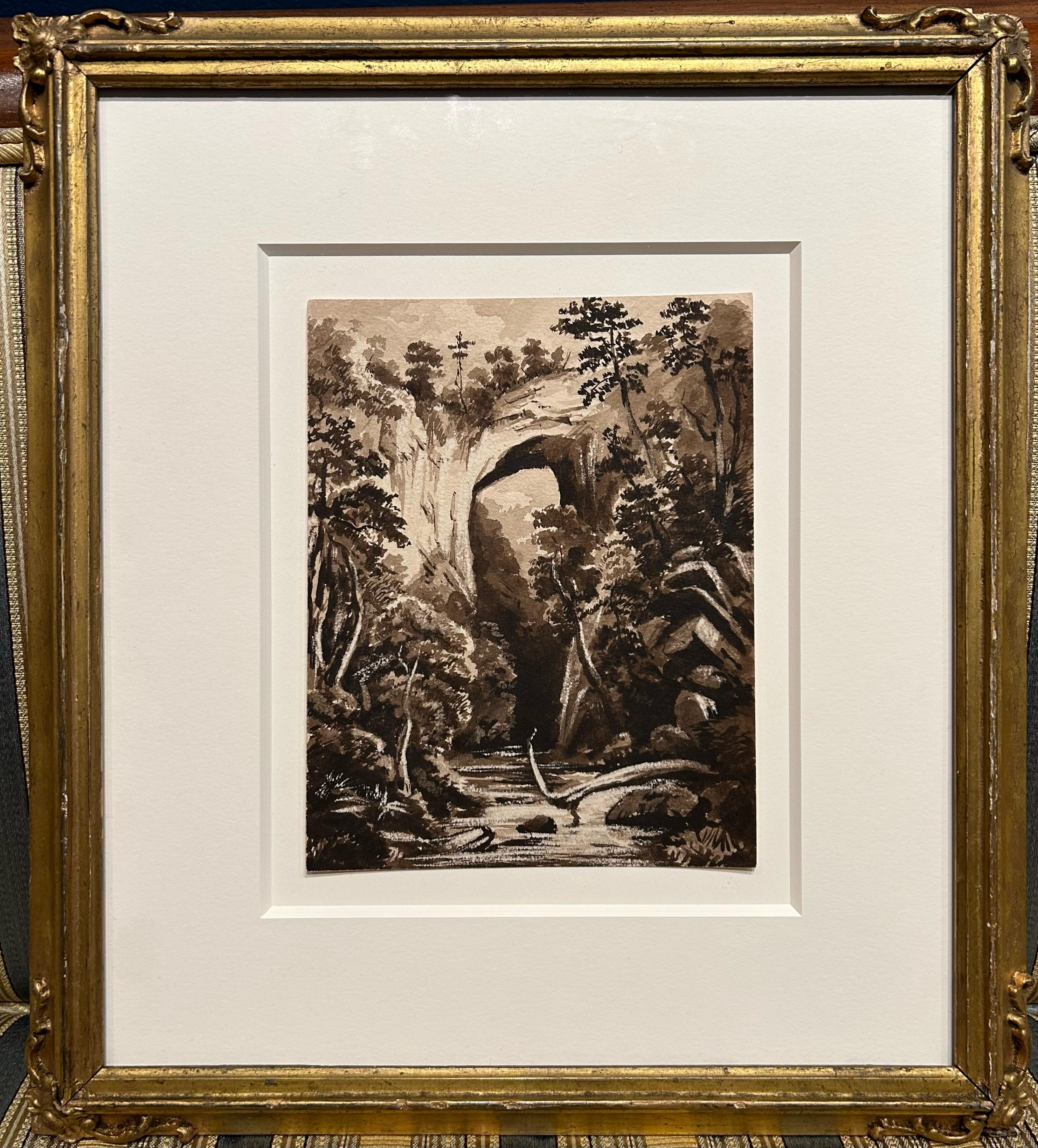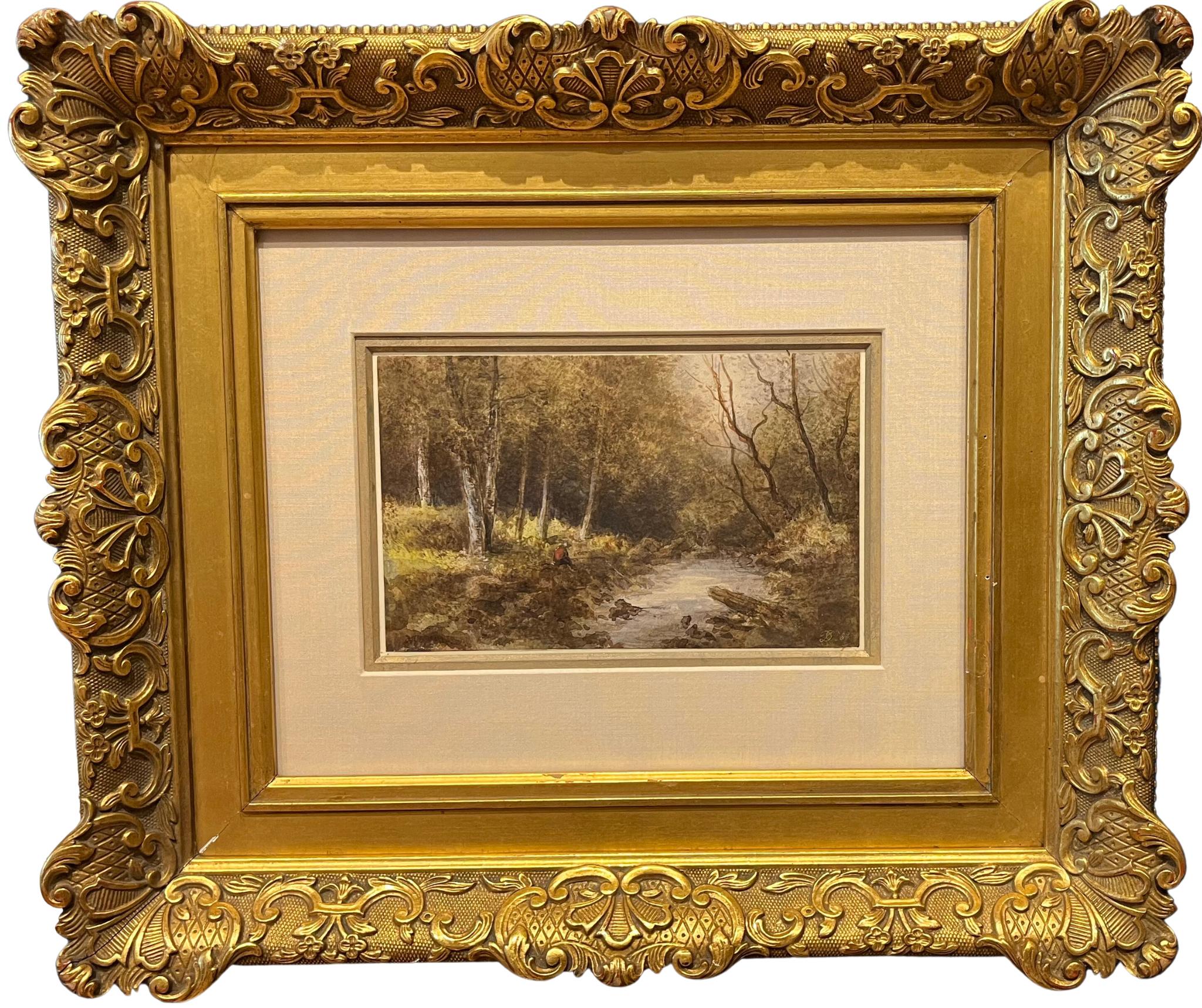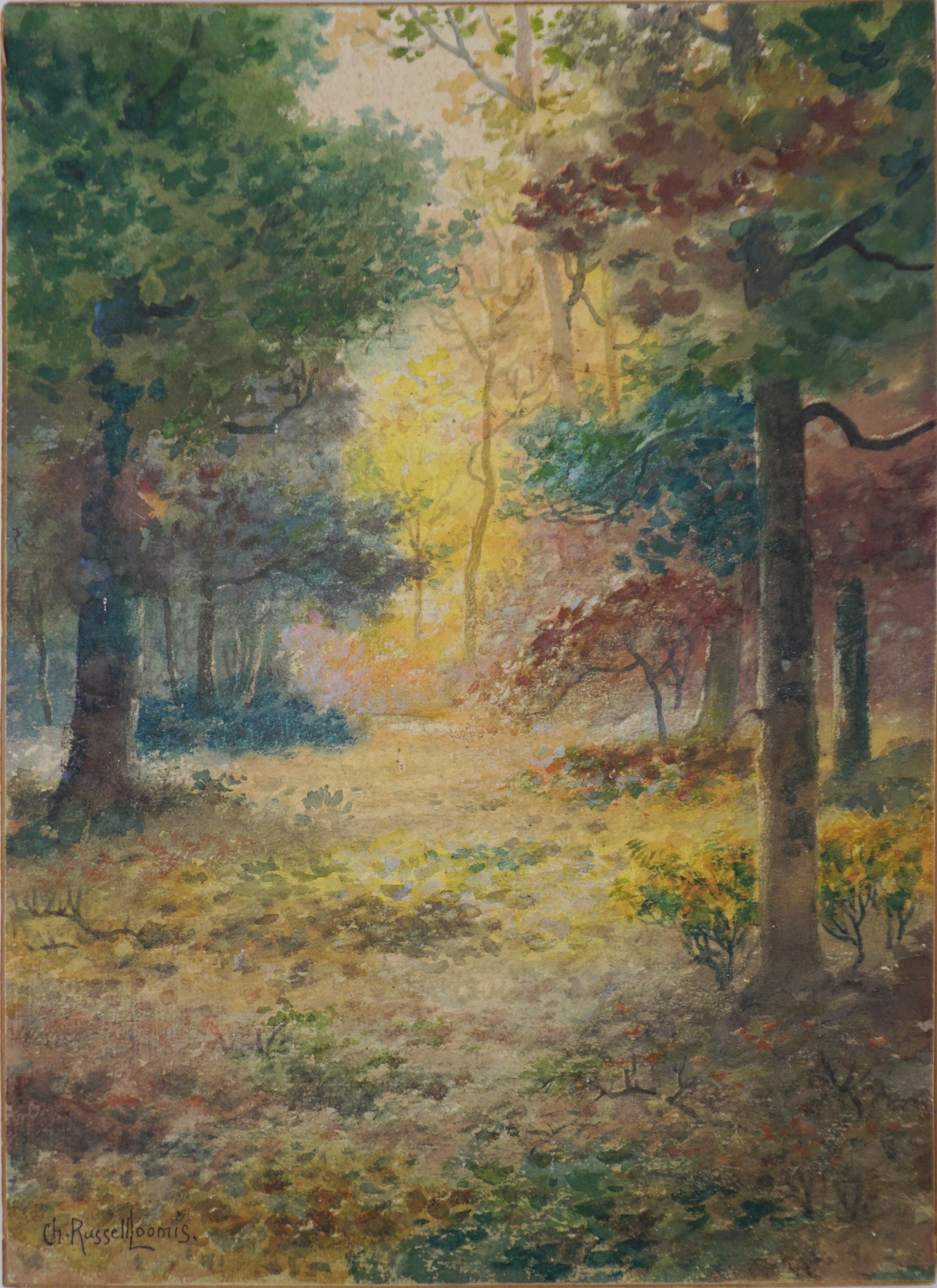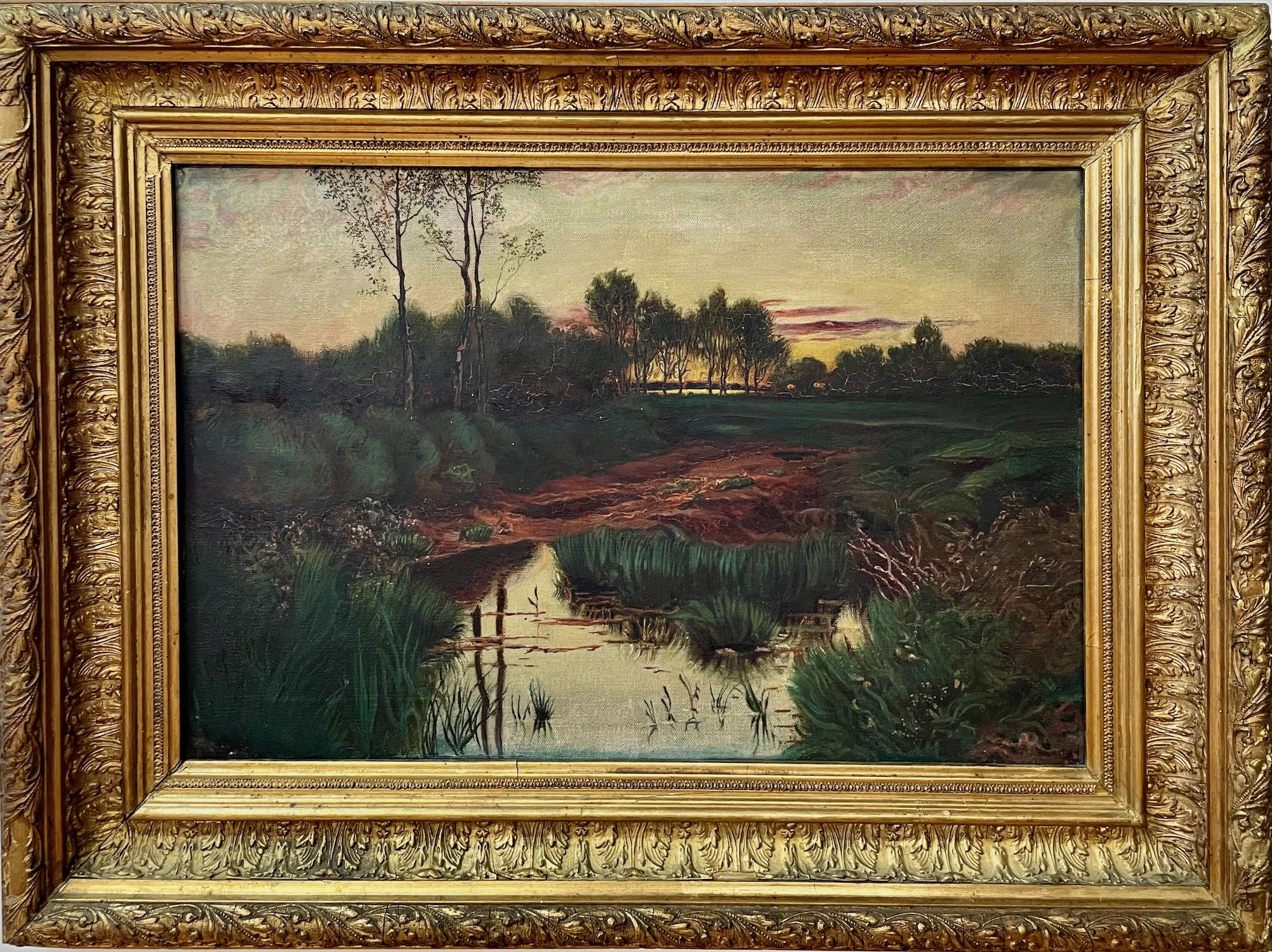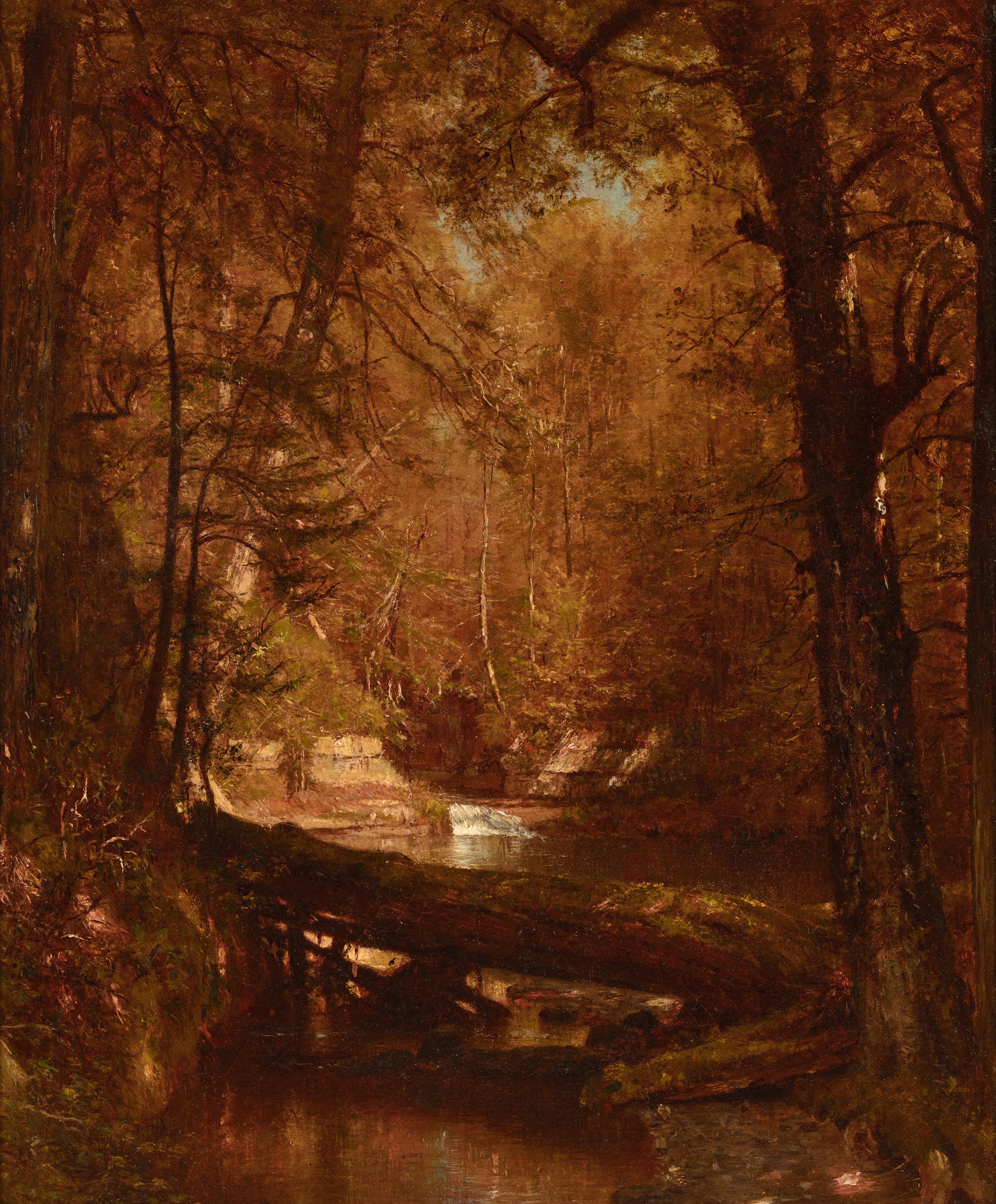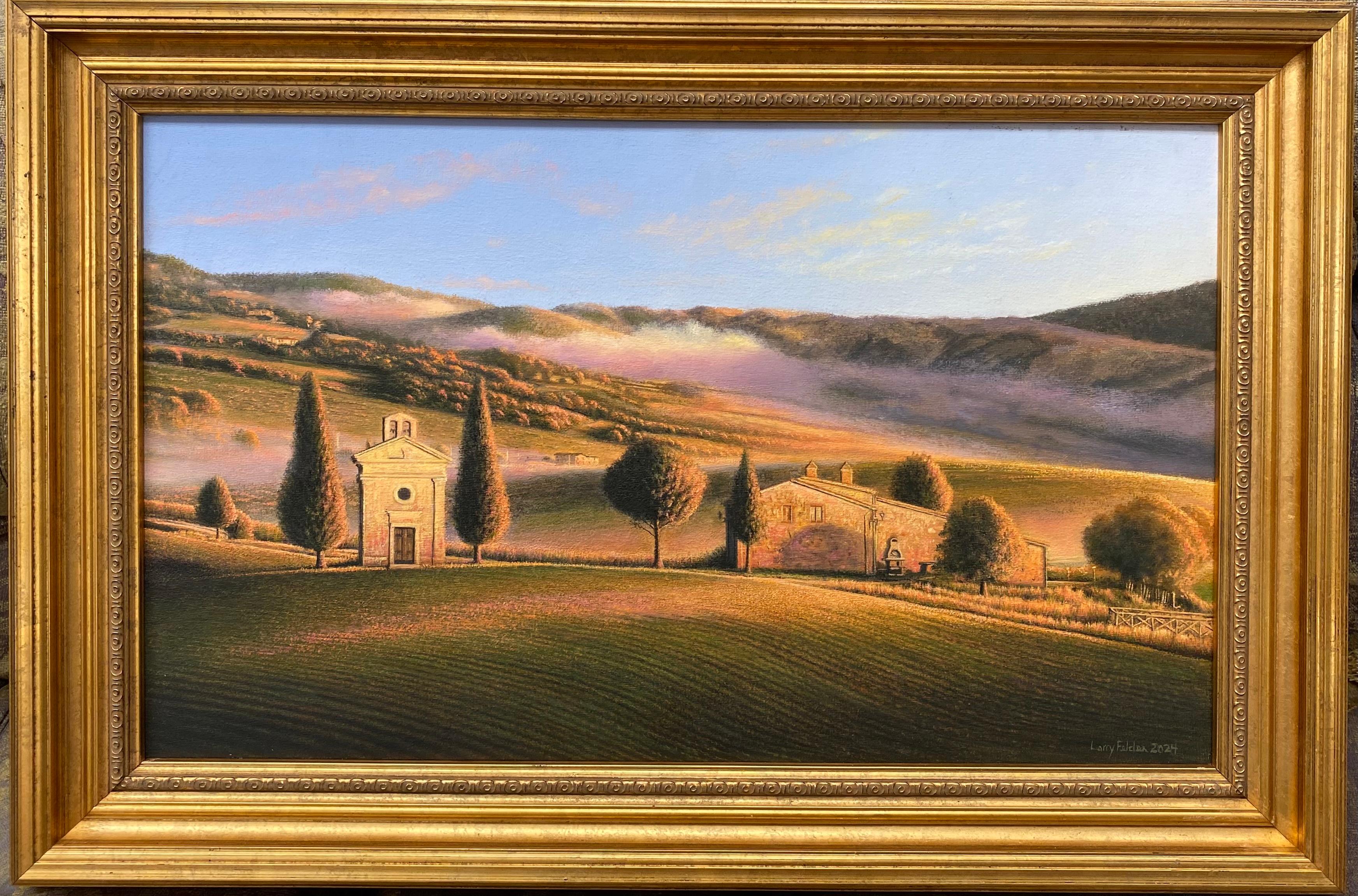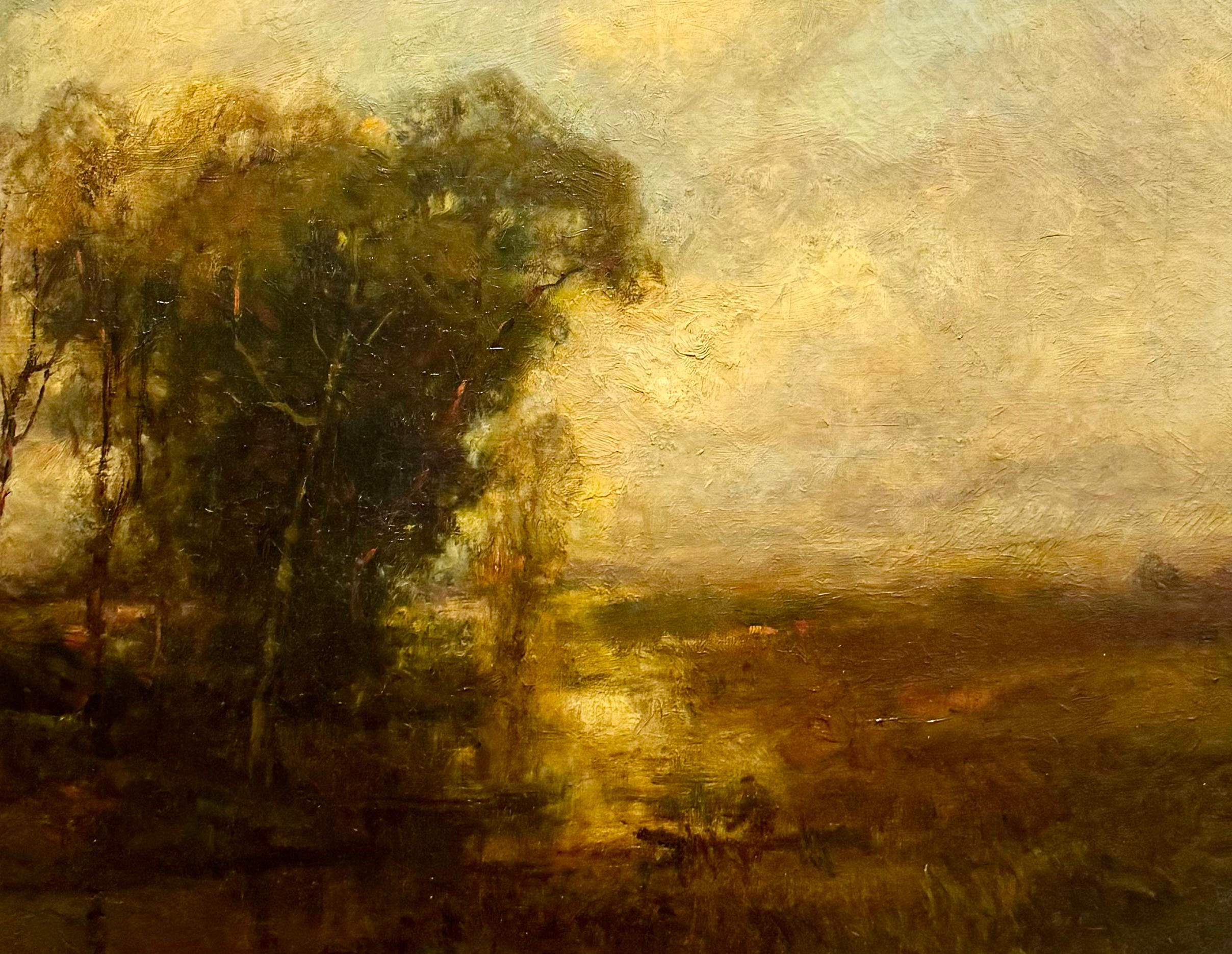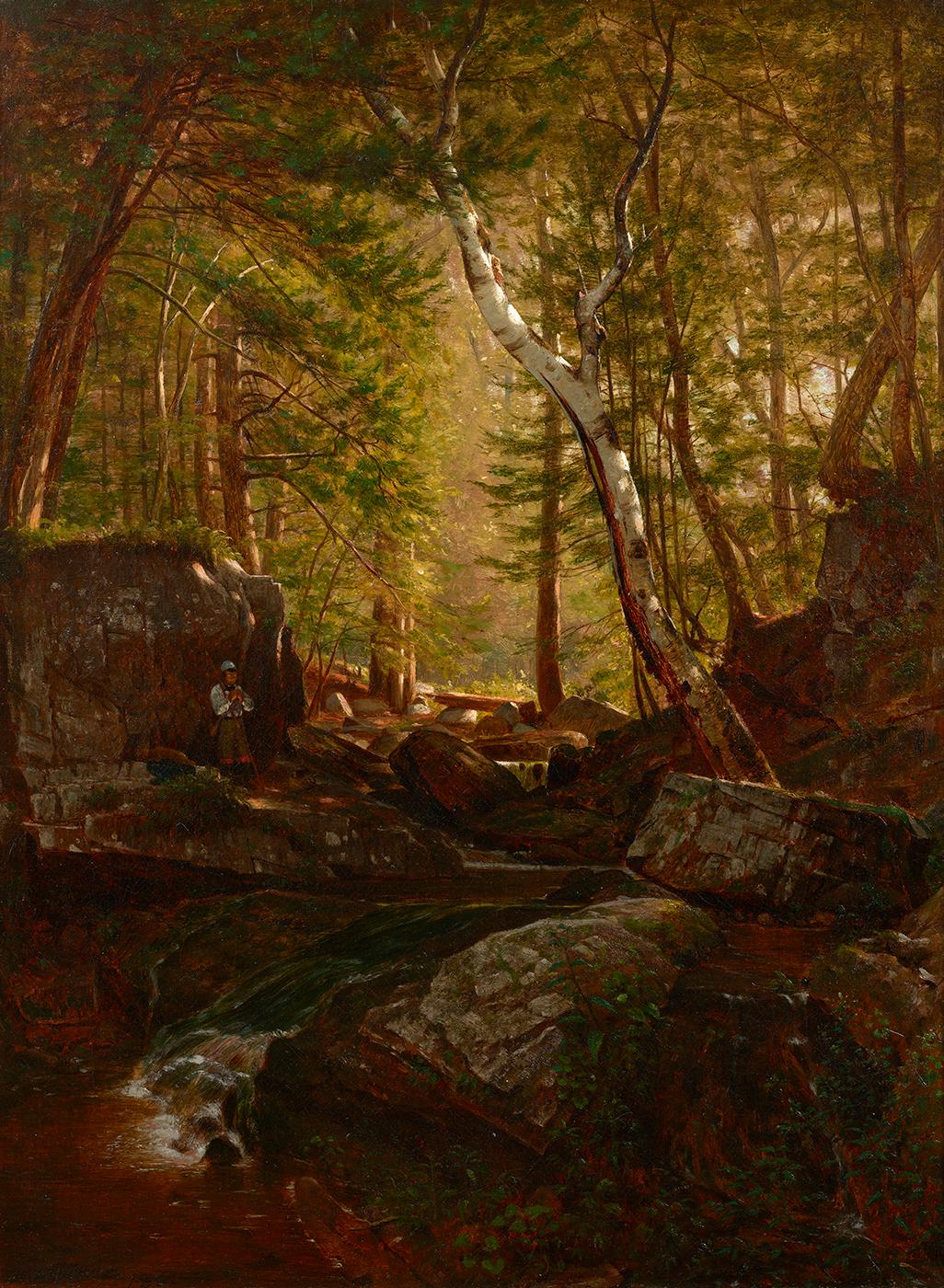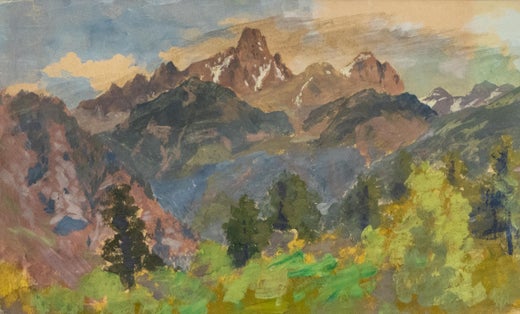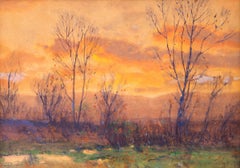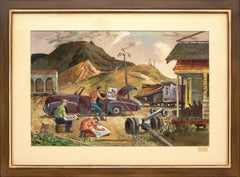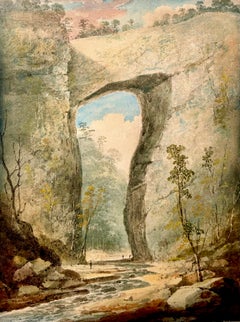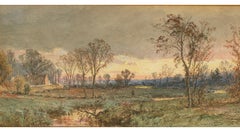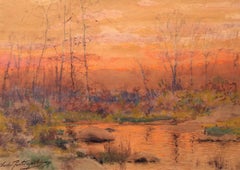
Untitled (River at Sunset, Colorado)
View Similar Items
Want more images or videos?
Request additional images or videos from the seller
1 of 10
Charles Partridge AdamsUntitled (River at Sunset, Colorado)circa 1900
circa 1900
$4,500List Price
About the Item
- Creator:Charles Partridge Adams (1858-1942, American)
- Creation Year:circa 1900
- Dimensions:Height: 12.5 in (31.75 cm)Width: 15.5 in (39.37 cm)Depth: 0.5 in (1.27 cm)
- Medium:
- Movement & Style:
- Period:
- Condition:
- Gallery Location:Denver, CO
- Reference Number:Seller: 163351stDibs: LU2731698453
Charles Partridge Adams
Born in Franklin, Massachusetts, Charles Partridge Adams moved with his mother and two sisters to Denver, Colorado, in 1876 in an effort to cure the two girls who suffered from tuberculosis. In Denver, Adams found work at the Chain and Hardy Bookstore. He received his first, and only, art training from the owner's wife, Helen Chain. Mrs. Chain, a former pupil of George Inness, provided instruction and encouragement to the young artist and introduced him to other artists in the area including Alexander Phimister Proctor. Proctor and Adams developed a friendship and the pair embarked on a three-month camping trip in Egeria Park, Colorado. In addition to exploring, both artists did quite a bit of sketching on the trip. After their return to Denver, Adams and Proctor shared a studio for a short period of time before Proctor moved to New York. Adams remained in Denver and after a short stint as an art teacher he studied wood engraving with Major J.M. Bagley. He quickly abandoned the engraving for health reasons and began working in crayon. His business card read "Landscapes and Crayon Portraits" though he much preferred landscapes. The artist soon made a name for himself in Denver. He established a wealthy clientele that purchased a number of his paintings to decorate their homes and to give as Christmas gifts. In 1890, Adams married Alida Joslin Reynolds and the couple honeymooned in Estes Park, Colorado. That same year, he exhibited for the first time at the National Academy of Design. Three years later, the artist opened his first studio on Larimer Street in Denver. He began working in watercolor and had success in the new medium selling his paintings in stores in Colorado Springs, Pueblo, Kansas City, and Chicago. Also in 1893, Adams became a charter member of the Denver Artists Club. In 1905, the couples dream of living in Estes Park was realized when Adams completed construction on a home and studio there. Adams referred to the studio as "The Sketch Box" and the family spent summers there every year. Though Adams is best known for his Colorado landscapes, he also painted in Yellowstone, the Tetons, the Canadian Rockies, the New Mexican Desert, and California. In 1914, the couple sailed to Europe where they spent five months touring. Three years later, Charles suffered from a near-fatal illness. In 1920, Adams moved to California where he opened a studio first in Pasadena and later in Laguna Beach. He became a member of the Laguna Beach Artists Association and began painting marine subjects. ©David Cook Galleries, LLC
About the Seller
5.0
Vetted Professional Seller
Every seller passes strict standards for authenticity and reliability
Established in 1979
1stDibs seller since 2013
289 sales on 1stDibs
Typical response time: 13 hours
Authenticity Guarantee
In the unlikely event there’s an issue with an item’s authenticity, contact us within 1 year for a full refund. DetailsMoney-Back Guarantee
If your item is not as described, is damaged in transit, or does not arrive, contact us within 7 days for a full refund. Details24-Hour Cancellation
You have a 24-hour grace period in which to reconsider your purchase, with no questions asked.Vetted Professional Sellers
Our world-class sellers must adhere to strict standards for service and quality, maintaining the integrity of our listings.Price-Match Guarantee
If you find that a seller listed the same item for a lower price elsewhere, we’ll match it.Trusted Global Delivery
Our best-in-class carrier network provides specialized shipping options worldwide, including custom delivery.More From This Seller
View AllSunset Along the Front Range, Colorado, 1900s Traditional Landscape Painting
By Charles Partridge Adams
Located in Denver, CO
This stunning, original signed landscape painting by Charles Partridge Adams (1858-1942) captures the breathtaking beauty of a Colorado sunset along the Front Range, near Denver. The...
Category
Early 20th Century Hudson River School Landscape Drawings and Watercolors
Materials
Watercolor
Artists Sketching, California, 1940s Large Modernist Gouache Painting, Landscape
By Frederick Shane
Located in Denver, CO
This original 1940s American Modernist gouache painting, "Artists Sketching (California)," captures a dynamic scene of three artists at work against a majestic mountain backdrop. With expressive brushwork and a rich color palette, the piece embodies Frederick E. Shane’s signature blend of realism and modernist abstraction. Signed, titled, and dated by the artist in the lower margin, this remarkable artwork reflects the era’s Regionalist influence and the artist’s keen eye for capturing creative moments in the natural landscape.
The painting is professionally housed in a custom archival frame, ensuring long-term preservation. Frame dimensions: 25.5 x 37.5 x 1.5 inches. Image size: 20.25 x 29.75 inches.
Provenance: Estate of the Artist, Frederick Shane
About the Artist: Frederick E. Shane (1906-1992)
A celebrated Missouri Regionalist painter and printmaker, Frederick E. Shane was known for his compelling genre scenes, landscapes, seascapes, and portraits in a variety of media, including oil, watercolor, gouache, tempera, and lithography. While fundamentally a realist, Shane often incorporated elements of abstraction, expressionism, and surrealism, adding depth and emotion to his compositions.
During the summers of 1925-26, Shane studied under Randall Davey at the Broadmoor Academy in Colorado Springs, an institution founded in 1919 by philanthropists Spencer and Julie Penrose. Shane remained closely connected to the Colorado Springs Fine Arts Center, the Academy’s successor, throughout the 1940s and early 1950s, participating in Artists West of the Mississippi exhibitions and forming lasting friendships with key figures like Boardman Robinson and Adolph Dehn...
Category
1940s American Modern Landscape Paintings
Materials
Gouache
Modernist 1945 Abstract Waterfall Watercolor Landscape Painting by Eve Drewelowe
By Eve Drewelowe
Located in Denver, CO
This striking 1945 abstract landscape watercolor by pioneering modernist artist Eve (Van Ek) Drewelowe, titled "The Champagne Cascades, Crescendos, Crashes," is a bold interpretation...
Category
1940s American Modern Landscape Paintings
Materials
Watercolor
Modernist Abstract Landscape Watercolor 'Old Mine and Houses, Cortez Colorado'
By Richard Ayer
Located in Denver, CO
This striking 20th-century modernist watercolor by Richard K. Ayers depicts a captivating scene of an old mine and houses in Cortez, Colorado. The artwork features a rich color palette of blue, green, gold, and brown, capturing the rugged beauty of the landscape with a unique, abstract perspective. Presented in a custom frame with all archival materials, the outer dimensions of the piece measure 36 ½ x 30 ½ x ¾ inches, with an image size of 24 ¾ x 18 ¾ inches.
About the Artist: Richard K. Ayers (1921–2003) was a talented artist who studied at Miami University...
Category
20th Century American Modern Abstract Paintings
Materials
Watercolor
$2,250 Sale Price
40% Off
Golden Cycle Mill Colorado WPA Mining Watercolor, 1940s Grayscale Artwork
By Charles Ragland Bunnell
Located in Denver, CO
Original 1940s grayscale watercolor painting by American artist Charles Ragland Bunnell, capturing a semi-abstracted view of the Golden Cycle Mill in Colorado Springs, Colorado. Painted in subtle shades of black and gray, this unique WPA-era landscape combines industrial subject matter with expressive, modernist style. A striking piece of American regionalist art from the mid-20th century.
The work is presented in a custom black frame.
Framed dimensions: 18" H x 19 ½" W x 1 ⅜" D
Sight size: 8 ⅛" H x 9 ⅝" W
The Golden Cycle Mining and Reduction Company, depicted in this piece, was a major part of Colorado's mining boom in the early 20th century. Located in Colorado City (now part of Old Colorado City), the mill played a significant role in the region’s gold production and industrial development.
About the Artist: Charles Ragland Bunnell (1897–1968)
Charles Bunnell was a pivotal figure in Colorado’s 20th-century art scene. He worked across multiple styles—from representational landscapes to fully abstract compositions—and was one of the few artists in Colorado to successfully embrace the evolving trends of Modernism, Surrealism, and Abstraction after WWII.
Bunnell studied under notable artists at the Broadmoor Art Academy, including Ernest Lawson and Birger Sandzén. His early works, including regional landscapes and mining scenes like this one, showcase a mix of American Scene painting and semi-abstract structure. He later became known for his bold experimentation with color, form, and geometry, producing both expressive oils and ink-watercolor series such as Black and Blue.
He participated in multiple New Deal art...
Category
1940s American Modern Landscape Paintings
Materials
Watercolor
1970s Acoma Pueblo, New Mexico Southwest Landscape Gouache Painting, Signed Art
Located in Denver, CO
This stunning gouache painting by Wolfgang Pogzeba (1936-1982) captures the beauty of Acoma Pueblo, New Mexico, depicting a dramatic cliffside landsca...
Category
1970s American Modern Landscape Paintings
Materials
Gouache
You May Also Like
Watercolor Landscape of Natural Bridge, Virginia
By William Guy Wall
Located in Fredericksburg, VA
William Guy Wall, a renowned artist of the early 19th century, is celebrated for his exquisite landscape paintings, and particularly with this watercolor. This painting, titled, "Nat...
Category
Early 19th Century Hudson River School Landscape Paintings
Materials
Paper, Watercolor
Twilight on the Sawmill River
By Jasper Francis Cropsey
Located in New York, NY
Signed and dated lower right: J.F. Cropsey 1887
Category
19th Century Hudson River School Landscape Paintings
Materials
Paper, Watercolor
Watercolor of Natural Bridge, VA
By Régis François Gignoux
Located in Fredericksburg, VA
Régis Francois Gignoux was a distinguished nineteenth-century artist whose work illuminated the sublime aspects of the American landscape. He was born in Lyon, France and trained at the Academie des Beaux-Arts in Paris, where his instructor, the history painter Paul-Hipployte Delaroche, encouraged his interest in landscape painting. He traveled to the United States in 1840, and immediately showed interest in American Landscapes. He immediately settled in New York and painted many well known sites of the United States: Niagara Falls, the Catskill Mountains, Mount Washington, and Mammoth Cave, Kentucky. He is most famous for his winter scenes, but shows beautiful landscapes year round. Gignoux quickly established himself within the leading Hudson River School circles of the time. He took sketching trips with Frederic Church and John Frederick Kensett. Today, his paintings are in the collections of the Corcoran Gallery of Art, the Museum of Fine Arts, Boston, the Brooklyn Museum of Art, the New York Historical Society, and the Georgia Museum of Art. This beautiful piece comes from the estate of the artist in New Jersey, and Meyer Fine Art...
Category
Mid-19th Century Hudson River School Landscape Paintings
Materials
Paper, Watercolor
Hudson River School Watercolor Titled Fishing the Creek
By David Johnson
Located in Fredericksburg, VA
David Johnson was born in 1827 in New York City. Beginning in 1845, he studied for two years in the antique school of the National Academy of Design. His classmates and colleagues in...
Category
Late 19th Century Hudson River School Landscape Paintings
Materials
Paper, Watercolor
1880s Original Hudson River School Landscape -- Sunset Through The Forest
By Charles Russell Loomis
Located in Soquel, CA
Beautiful Hudson River School Original gouache autumnal landscape of vivid sunset through forest by Charles Russell Loomis (American 1857 - 1936), circa 1880. Warm and cool tones wit...
Category
1880s Hudson River School Landscape Paintings
Materials
Paper, Gouache, Cardboard
Reflections of Trees at Dusk
Located in San Francisco, CA
Much about this late 19th-century painting remains a mystery, including the name of the artist who only left their identity in a single-letter monogram. But the work's moody embrace ...
Category
Late 19th Century Hudson River School Landscape Paintings
Materials
Canvas, Oil
